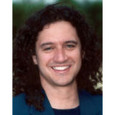Want to learn how to teach meditation?
It’s simple.
You can turn yourself into a meditation teacher in less than five minutes by following these easy steps.
First, pick a simple meditation technique and practice describing how to do it. You don’t have to be able to do it yourself, just be able to explain to others how it is supposed to be done.
Don’t know any meditation techniques? No problem. Just do a search for free meditation techniques online. Or you can try using this one: Pay attention to your breathing. Be aware of your in-breath; be aware of your out-breath. If your mind starts to wander, just bring your focus back to your breathing.
That's it. Those are the complete instructions for that meditation.
Then, when your students come to ask you about all the different problems they may be having with this practice - and there will be problems with this kind of meditation technique, because it’s very, very hard to stay focused on breathing - say this:
“Hmmm…” (as if you are thinking deeply about their personal question).
Next, give them a knowing nod and say the following:
“I see. Go back to paying attention to your breath.”
Before they can come back with some protest like, "That’s what I’m doing, but it doesn’t seem to be working," close your eyes and settle into a holier-than-thou, yet peaceful, air.
That’s it!
Hang up your shingle as a meditation teacher and enjoy.
I hope you know that this is satire. However, if you have had some meditation instruction, you may know that this isn't too far removed from what some students experience.
Particularly here in the West, we often place a little too much importance on the style with which meditation is taught. Because of this, the majority of teachers just attempt to imitate how their own teachers taught. But these root teaching styles may have been impacted by the fact that many of the first meditation teachers here spoke no English, or they came from cultures where the traditional teaching method was to have students learn only by floundering and trial-and-error.
For many years now, I have taught Zen archery, and I noticed that some of the other teachers are almost proud of speaking in a clipped and cryptic style of English similar to that used by our Zen archery Master from Japan. Our sensei, or teacher, speaks very little to the American-born students. Curiously, however, whenever native Japanese speakers come to the dojo, our sensei is much more talkative and attentive and gives these students much more detailed corrections and instruction.
Now, having said that, even if he did talk to us as much as he does to his Japanese students, there would still be cultural differences that impact the teachings. He’s not really interested in talking about emotions and how they come into play in this moving meditation form. As might be expected, the second generation of teachers he taught also has nothing to say about the emotional component of the practice either, although that may be a useful area to explore.
This isn’t to day that it’s necessarily better to teach in some new way. It might or might not be. We would need to try it out and experiment with it in order to see. What I do want to suggest, however, that we explore how meditation is taught with an open mind and some curiosity, instead of merely parroting everything we think we remember hearing our teacher say.
That reminds me of a funny story. I have a friend who is a somewhat radical Zen meditation teacher named John Tarrant. There was one particular Zen intensive that occurred in somewhat unusual circumstances, so John made up an exercise for those students to practice for that situation.
A few years later, John returned to that city and found that these students were still practicing the same exercise, although it was no longer relevant to their situation. John suggested that they discontinue that practice, but the students objected loudly, telling him, "We can't stop! This is a very ancient exercise from our Zen patriarch!" No one would believe him when he said this was an exercise he made up for that one retreat and not some ancient technique from a thousand years ago, and they refused to give it up.
Steven Sashen began meditation when he was eight years old, was one of the first biofeedback pioneers, and researched cognition and perception at Duke University. In addition to a successful career as an entrepreneur and entertainer, Steven has taught transformational techniques around the world and developed the Instant Advanced Meditation Course, which Dr. Gay Hendricks calls, "Perhaps the fastest and easiest way to relax, expand awareness, and find deep inner-peace."
Additional Resources covering Meditation can be found at:
Website Directory for Meditation
Articles on Meditation
Products for Meditation
Discussion Board
Steven Sashen, the Official Guide To Meditation

Post new comment
Please Register or Login to post new comment.